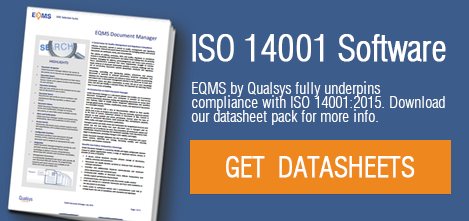Want to contribute to this article?
The ISO 14001 standard was revised in 2015 to make several major improvements. This article is the first in a series of four designed to help you understand the implications the revision has for your organisation, and how to develop an environmental management system (EMS) that conforms to the revised standard.

Why context matters
Implementing an EMS is a strategic decision influenced by the context of the organisation. The "Context of the organisation" clause of ISO 14001 requires organisations to consider both the internal and external issues that can impact on their strategic objectives and how they plan their QMS.
Your organisation should focus particularly on factors and conditions that can affect your products, services, investments and interested parties. Context becomes an important consideration and helps to ensure that your QMS is designed and adapted for your organisation rather than taking a 'one size fits all' approach.
Determining your context
While there is no prescribed method of determining the context of your organisation in relation to ISO/DIS 9001, you should take this simple and pragmatic five-step approach:
- Identify the internal issues that can affect your organisation's products, services, investments and interested parties.
- Identify the external issues that can affect your organisation's products, services, investments and interested parties.
- Identify who are the interested parties and what are their requirements.
- Define the scope of your EMS.
- Establish and maintain your EMS.

Step 1: Identifying internal issues
Your organisation's internal context is the environment in which you aim to achieve your objectives. Internal context can include your approach to governance, your contractual relationships with customers, and your interested parties.
Internal issues can include your:
- regulatory requirements
- strategies to conform to your policies and achieve your objectives
- relationship with your staff and stakeholders, including partners and suppliers
- resources and knowledge (e.g. capital, people, processes and technologies)
- risk appetite
- assets
- product or service
- standards, guidelines and models adopted by the organisation
- information systems
Step 2: Identifying external issues
To understand your external context, consider issues that arise from your social, technological, environmental, ethical, political, legal and economic environment.
External issues may include:
- government regulations and changes in the law
- economic shifts in your market
- your competition
- events that may affect your corporate image
- changes in technology
Step 3: Identifying interested parties
Your interested parties include customers, partners, employees and suppliers. When developing your EMS, you only need to consider interested parties that can affect your:
- ability to consistently provide a product or service that meets your customers' needs and any statutory requirements and regulations
- continual improvement process
- ability to enhance customer satisfaction through effectively applying your system
- your process for ensuring you conform to your customers' requirements and any statutes or regulations that apply
Step 4: Defining the scope of your EMS
You must define the scope of your EMS so your compliance obligations are within reasonable operational boundaries.
You should also consider your own corporate context, the expectations of your interested parties, and the most significant processes that your EMS applies to.
Once defined, you will need to document the scope, and include all products, services and activities with significant environmental aspects.
Step 5: Establishing and maintaining your EMS
You must regularly review and monitor those internal or external issues you have identified. Once you understand your internal context, you can carry out a 'PEST' (political, economic, social and technological) analysis, for example. By doing this, you can determine which factors will affect how you operate.
While you have no control over external issues, you can adapt to them. PEST factors can be classified as 'risks' and 'opportunities' in a SWOT (strengths, weaknesses, opportunities, threats) analysis or other alternative methods.

How EQMS can help
EQMS Risk Manager is an effective solution that quickly and efficiently allows you to manage all of your risk, including environmental risk.
The incorporated Risk Assessment feature draws upon data from incidents, audits and reviews to offer both a qualitative and quantative assessment of your operations, supported by clearly defined criteria. Risks are immediately scored and compared based on an agreed formula to allow you to understand your own internal and external risk and manage your EMS effectively.
Once you've undertaken your initial assessment, EQMS Audit Manager allows you to manage any type of audit or inspection activity. It creates and stores checklists of questions for ongoing use and analysis, so you can maintain a thorough understanding of their context over time.
When unanticipated events occur, EQMS Issue Manager helps to identify those that are likely to happen again so you can eliminate any system-related problems. It automatically generates dashboards and reporting to identify trends and provide instantly available statistics that improve your decision-making and support you in implementing change. In this way, you can effectively incorporate considerations relating to the internal and external issues you've identified.
What you should do now
Learn more about EQMS software with our datasheets by clicking the link below.









Share your thoughts on this article